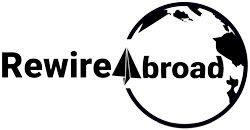How to Move to Slovenia: A Practical Guide for Expats and Retirees
Author
Adonis Villanueva
Date Published

Why Slovenia? A Hidden Gem in the Heart of Europe
Imagine a fairy-tale setting, a medieval church, perched on a tiny island, mirrored in a glacial lake with the Julian Alps behind it. This is Slovenia: a hidden gem in Central Europe. It’s small (about 2 million people) but mighty in beauty and safety. Surrounded by Italy, Austria, Hungary, and Croatia, it’s easy to hop across borders on weekends. Many Americans haven’t heard of it, but those who live here tell legends: pristine lakes (like Lake Bled), snow-capped mountains, and a charming medieval capital with a castle. In fact, Slovenia “stands out for its pristine natural beauty and reputation for safety,” making it one of Europe’s safest and most scenic destinations.
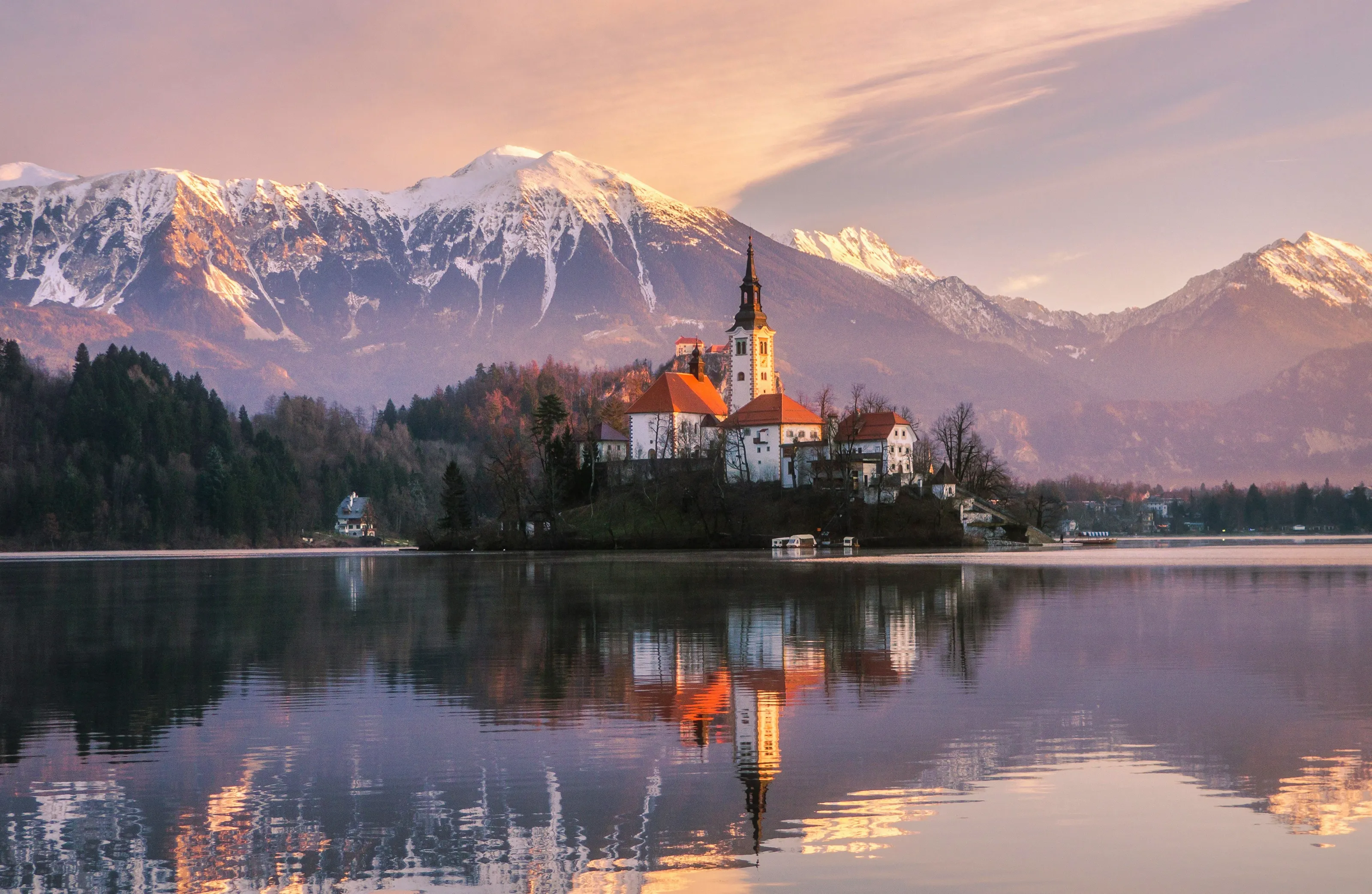
Last year, I visited the Italian Alps and was completely enamored by their rugged beauty. I even started seriously looking into moving somewhere in the region — but soon realized the cost of living there was much higher than I'd anticipated (FIRE Calulator). That led me to search for other options nearby that offered the same stunning Alpine scenery without the steep prices. That’s when I rediscovered Slovenia. Although I'd been to the country before, I had only visited the charming coastal towns and hadn't ventured into its Alpine heart. Learning more about the Julian Alps — with their dramatic peaks, crystal-clear lakes, and affordable lifestyle — opened up an exciting new possibility.
You can spend days hiking lush forests, then evenings sipping wine by the lake or wandering Ljubljana’s bike-friendly streets. Compared to popular retirement spots (Spain, Florida, Mexico), Slovenia offers a slower pace, cleaner air, and very low crime. It also doesn’t hurt that your dollar stretches farther here: Slovenia’s cost of living is generally lower than in Western Europe or the US. No wonder many Americans are choosing to retire overseas – Slovenia is safe, scenic, and surprisingly affordable.
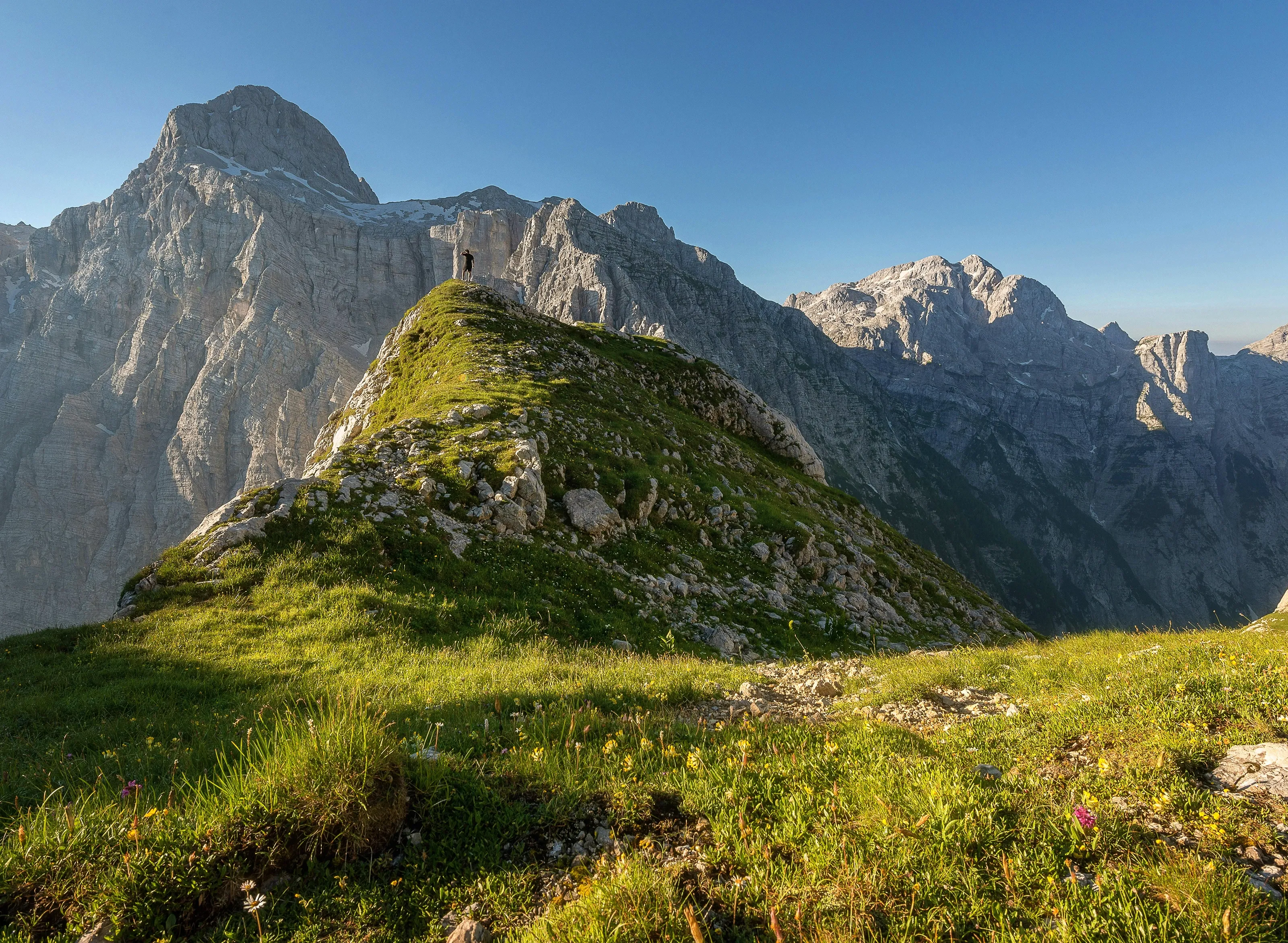
"We originally planned to retire in Portugal," says Michael, a retired engineer from Colorado who moved to Slovenia in 2022. "But Slovenia offered everything we wanted – four seasons, outdoor activities, excellent healthcare, and a central European location – at about 60% of what we'd spend back home."
Slovenia benefits from flying under the radar compared to retirement hotspots like Portugal, Spain, or Panama. While these destinations have seen exponential growth in expat populations (and corresponding price increases), Slovenia remains refreshingly authentic and affordable.
What sets Slovenia apart:
- Safety: Ranked among the safest countries globally
- Nature: 60% forested with abundant outdoor activities
- Location: Weekend trips to Venice, Vienna, Zagreb, or Budapest
- Infrastructure: Well-maintained roads, reliable public transportation
- Healthcare: High-quality universal system with low out-of-pocket costs
- English proficiency: Widespread, especially among younger generations
- Size: Entire country can be crossed in 3 hours, making exploration easy
The downsides? Winters can be gray and chilly (though far milder than the Midwest), bureaucracy sometimes moves at a glacial pace, and the Slovene language isn't the easiest to master (though you'll get by fine with English in urban areas).

Visa & Residency: How to Legally Move to Slovenia
Slovenia, with its picturesque landscapes and high quality of life, has become an attractive destination for American retirees. While the country does not offer a specific retirement visa for non-EU citizens, there are viable pathways to establish long-term residency. Understanding the visa and residency options is crucial for a smooth transition to life in Slovenia.
The most common approach for U.S. citizens involves entering Slovenia on a 90-day Schengen visa and applying for a Type D (long-stay) visa from a Slovenian embassy before arrival. Once in Slovenia, this can be converted into a temporary residence permit. Retirees typically apply as self-sufficient individuals, requiring proof of a monthly income of approximately €1,100 per person. Other options include family reunification, if your spouse is an EU citizen, or establishing a business in Slovenia with an initial investment of €7,500 .
The residency process entails gathering necessary documentation, such as a valid passport, proof of health insurance, financial means, accommodation, and a criminal background check. Applications are submitted at the local Administrative Unit (Upravna Enota), with decisions typically made within 30 to 60 days. The initial temporary residence permit is valid for one year and is renewable. After five continuous years of temporary residence, you may apply for permanent residency, which offers additional benefits and security .
Healthcare coverage is a critical component of the residency application. Applicants must have comprehensive health insurance, which can be obtained through international insurers like unknown nodeor IMG before transitioning to the Slovenian system. Ensuring adequate healthcare coverage not only fulfills legal requirements but also provides peace of mind as you embark on your retirement in Slovenia.
Slovenia Retirement Visa Options for Americans
Slovenia doesn't offer a specific retirement visa, but several pathways make relocation feasible for Americans. The most common approach is:
- Enter Slovenia as a tourist (90-day Schengen visa)
- Apply for a Type D (long-stay) visa from your nearest Slovenian embassy before arrival
- Convert to a temporary residence permit once in Slovenia
For retirees specifically, the most suitable temporary residence permits are:
- Self-sufficient individual permit: Requires proving monthly income (approximately €1,100 per person)
- Family reunification: If your spouse is an EU citizen
- Business owner: By establishing a company in Slovenia (requires €7,500 initial investment)
Slovenia Residency Permit Process
The residency process is straightforward but requires patience:
- Gather documentation:
- Valid passport
- Proof of health insurance (international policy or enrollment in Slovenian system)
- Proof of sufficient funds (bank statements, pension letters)
- Proof of accommodation (rental agreement or property deed)
- Criminal background check from your home country
- Photos (passport size)
- Application form
- Submit application at your local Administrative Unit (Upravna Enota)
- Biometric data collection (fingerprints and photo)
- Await decision (typically 30-60 days)
Your first temporary residence permit will be valid for one year and is renewable. After five continuous years of temporary residence, you can apply for permanent residency, which offers additional benefits and security.
The key stumbling block for many Americans is healthcare coverage. You'll need comprehensive coverage during the application process, which can be obtained through international insurers like Cigna Global or IMG before transitioning to the Slovenian system.
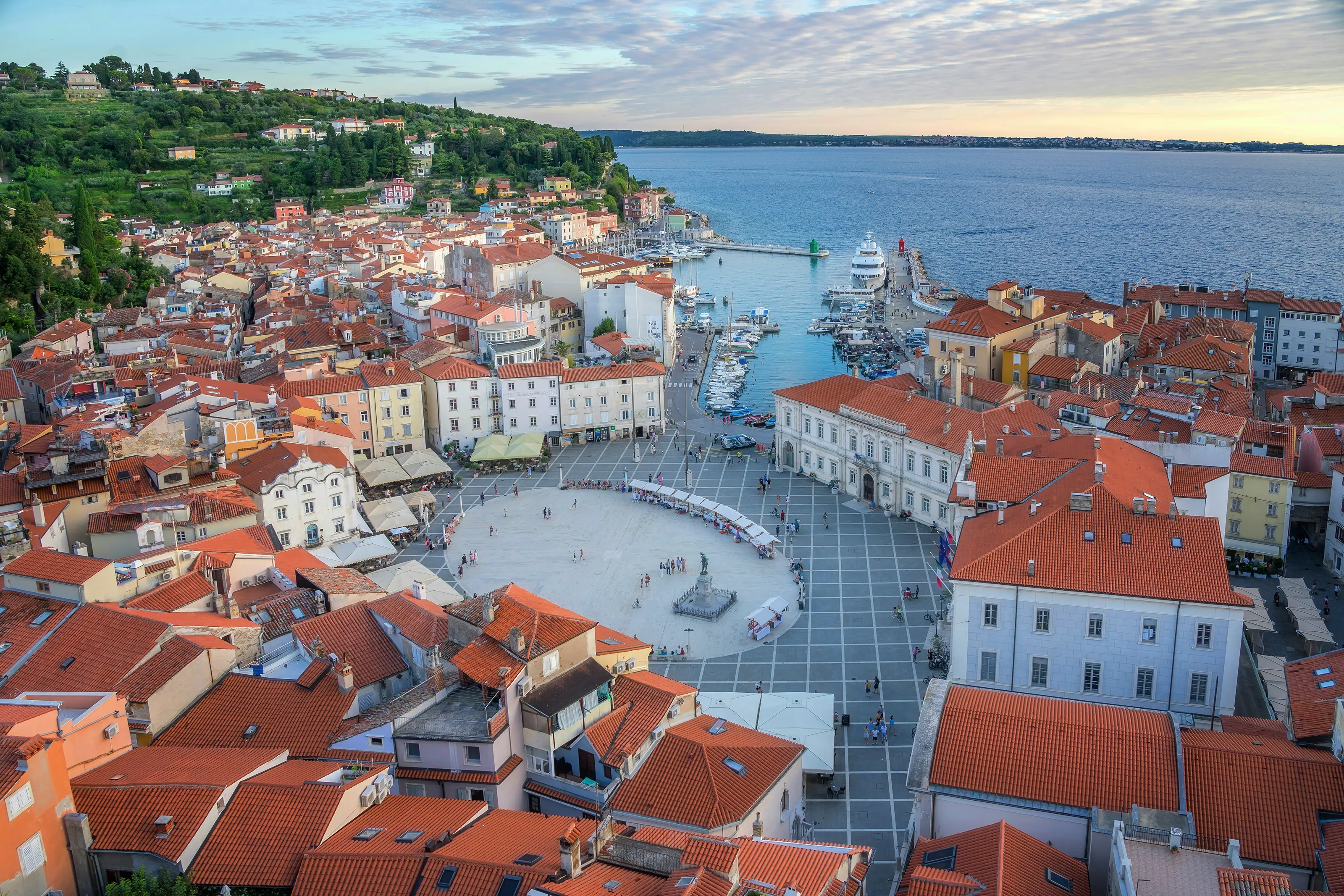
Cost of Living in Slovenia for Retirees
Money goes a long way in Slovenia. One comparison site found the average cost-of-living index in Slovenia is about 48% lower than in the United States. In practical terms, everyday expenses (housing, food, transit) are significantly cheaper. For example, a one-bedroom apartment in Ljubljana’s city center runs roughly €500–1,000 per month(say ~€700, or about $720). In contrast, a similar apartment in a U.S. city might average well over $1,500.
Basic groceries are inexpensive: a loaf of bread is around €1.50 and a liter of milk €1.00. Public transit is a bargain – a monthly bus pass in Ljubljana costs only €30. Other utilities are modest too (about €90 for an 85m² apartment’s electricity/heating). The table below compares a few typical expenses in Ljubljana vs. a U.S. city and (for context) Madrid, Spain:
Category | Slovenia (Ljubljana) | United States | Spain (Madrid) |
|---|---|---|---|
1BR rent (city center) | €500–1,000 | ~$1,800 | €600–800 |
Bread (500g loaf) | €1.50 | $2.50 | €1.00 |
Milk (1 liter) | €1.00 | $0.90 | €0.80 |
Monthly transit pass | €30 | $70 | €45 |
Internet (60 Mbps) | €20 | $60 | €30 |
Utilities (electricity, heating) | €90 | $150 | €100 |
Meal, inexpensive restaurant | €10 | $15 | €12 |
Most retirees report living comfortably on €2,000-2,500 per month for a couple, including rent. If you own property, €1,500-1,800 monthly provides a pleasant lifestyle including regular dining out and regional travel.
Maria, a retired teacher from Arizona living in Ljubljana, notes: "My Social Security check goes three times further here. I live in a beautiful apartment near the old town, eat out several times a week, and still save enough for frequent trips around Europe."
Take a look at our 🔥FIRE Calculator for what you need to live comfortably in Slovenia.
Best Places to Live in Slovenia for Expats
Slovenia may be small, but its cities and regions each have a unique vibe. Here are some favorites for expats:
Ljubljana: Cosmopolitan Comfort
The capital is about 300,000 people – small by global standards but full of life. Its charming old town sits on the Ljubljanica River, and a medieval castle watches from a hilltop. Think outdoor cafes, pedestrian streets, and a university-town energy. English is widely spoken (especially among younger locals and at businesses), so daily life is easy. For a retiree, it feels like a safe, clean small city with big-city amenities (cafes, theaters, markets). Costs here are highest in Slovenia – e.g. a downtown 1BR is around €700expatexchange.com – but that’s still much less than a similar downtown in New York or London. Our Country Search tool shows Ljubljana scores high for safety and culture. And nature is just an hour’s drive (Alps, Karst caves). Overall, Ljubljana balances modern convenience with Slovenia’s scenic charm.
- Ideal for: Those who enjoy urban living, cultural events, and excellent restaurants
- Monthly budget: €2,200-2,800 (couple, including rent)
- Expat community: Largest in Slovenia, with regular meetups and activities
- Downsides: Higher costs than elsewhere in Slovenia; tourist crowds in summer
Maribor: Authentic and Affordable
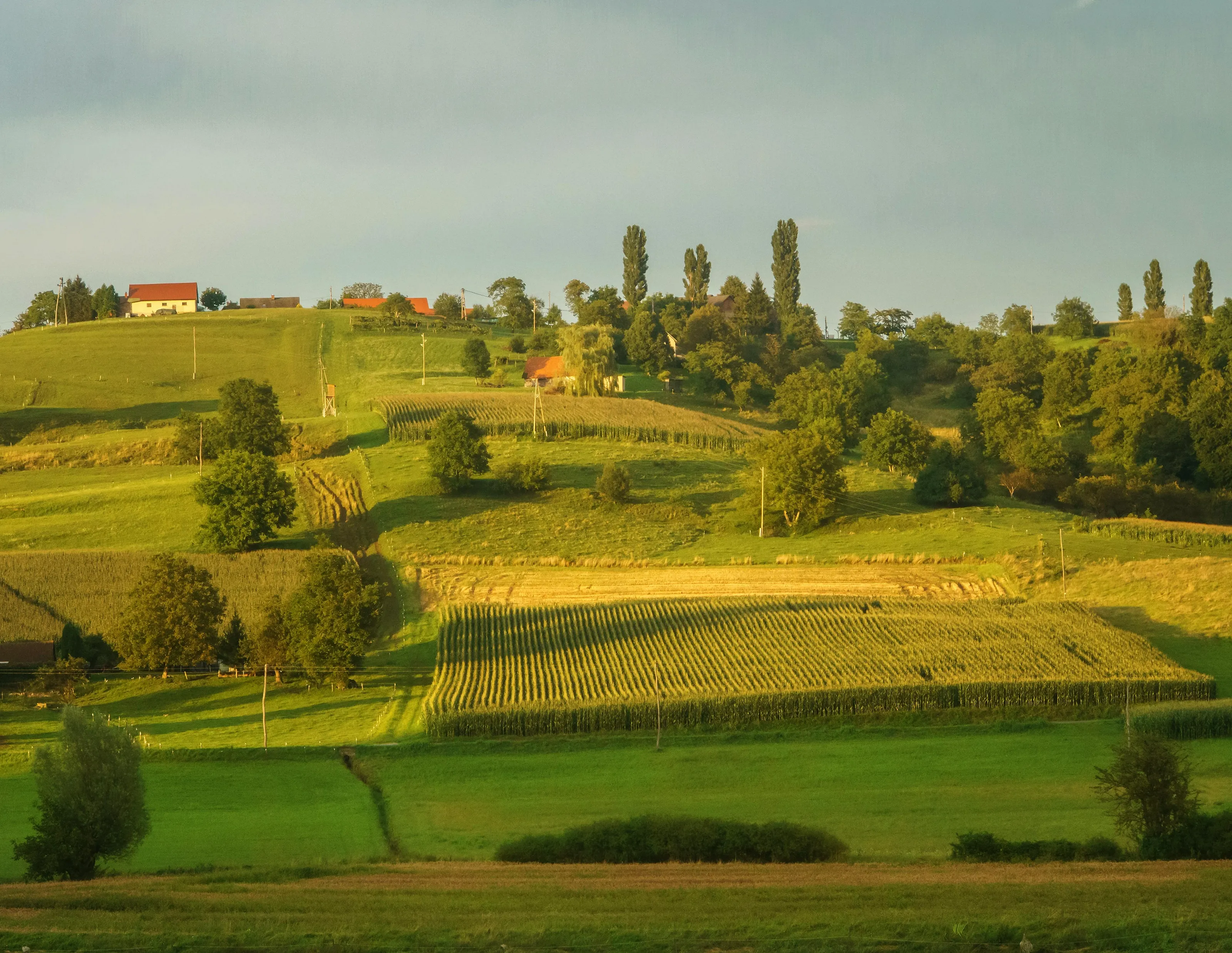
This is Slovenia’s wine capital and second city (population ~100,000). The Drava River winds through town, and the 17th-century pyramid (old fortress hill) offers city views. Known for its Old Vine (Europe’s oldest grapevine) and the Lent Festival, Maribor has a cozy vibe. Housing and living costs are noticeably lower here (rents can be 30–50% less than in Ljubljana). It’s quieter and more rural-feeling – think hiking Pohorje mountains or vineyard picnics instead of flashy nightlife. Many retirees enjoy Maribor for its slower pace, friendly locals, and still-full services (shops, hospital, theater). You won’t lack for things to do: from spring wine harvests to winter skiing nearby, it’s a good compromise between city life and nature.
- Ideal for: Wine enthusiasts, those seeking lower costs, outdoor adventurers
- Monthly budget: €1,800-2,300 (couple, including rent)
- Expat community: Smaller but growing, primarily academics and remote workers
- Downsides: Fewer English speakers; colder winters; fewer direct transportation links
Coastal Areas (Piran/Koper/Izola): Mediterranean Vibes
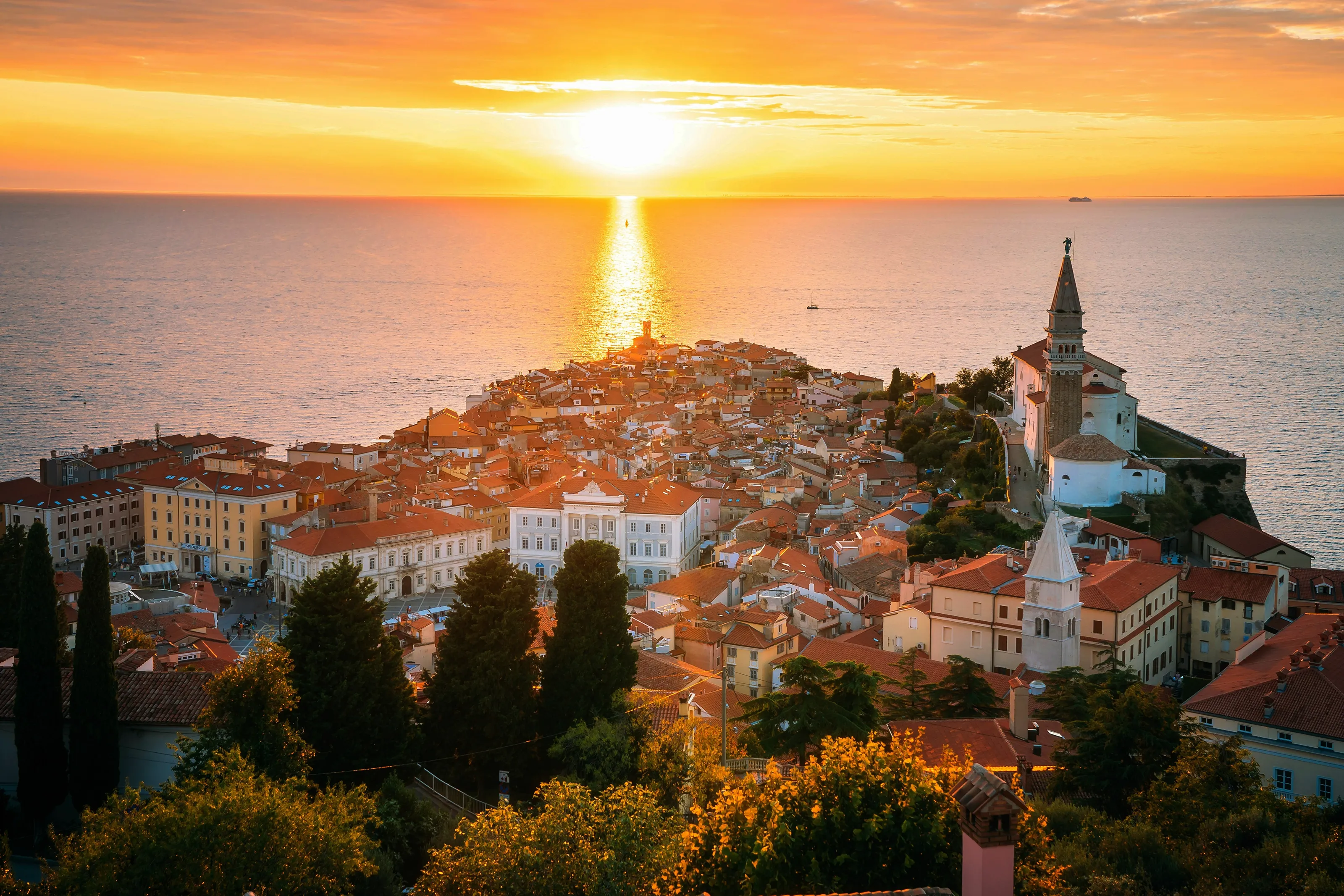
On Slovenia’s tiny Adriatic coast lies Piran, a medieval town that feels like a Tuscan village by the sea. Its narrow streets and Venetian-style plaza end at the ocean. Here you get mild Mediterranean winters and hot, sunny summers. Daily life often means fresh seafood at sunset. Piran is very small (just ~4,000 residents), so community life is quiet and personal. Note that coastal homes are pricier (sea views demand a premium) and summers see tourists filling the cafes. But many expats find the seaside charm irresistible. If you dream of beachside walks and seafood feasts, Piran might be your paradise (just brush up on your Italian – it comes in handy here – or Slovene). The Adriatic is minutes away any day of the year.
- Ideal for: Beach lovers, milder climate seekers, seafood enthusiasts
- Monthly budget: €2,000-2,600 (couple, including rent)
- Expat community: Seasonal fluctuations, more crowded in summer
- Downsides: Higher seasonal costs; tourist crowds in summer; limited coastline
Lake Bled/Bohinj Region: Natural Splendor
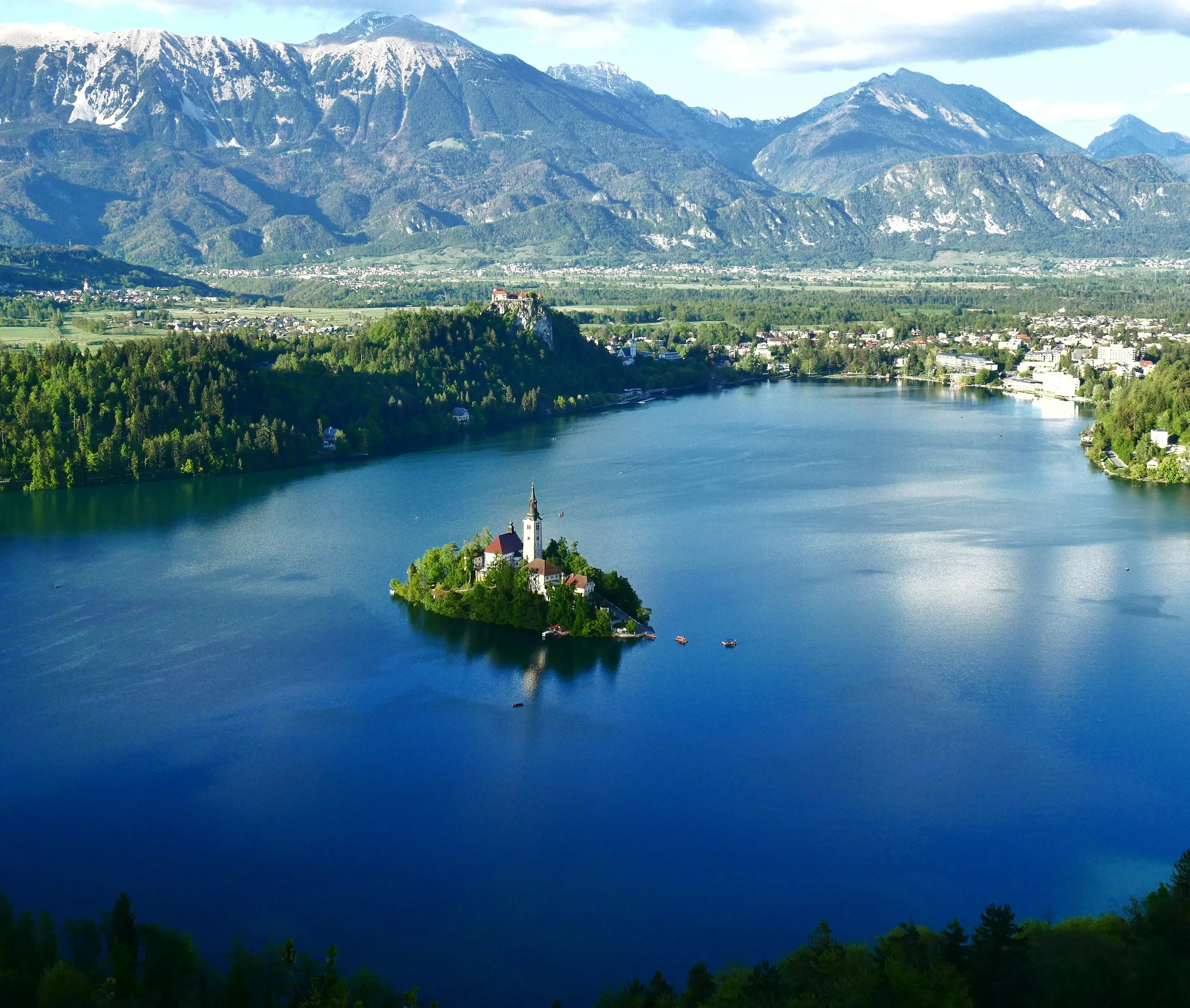
Not a city, but worth mentioning. Near Ljubljana is Lake Bled – picture a church on a tiny island with a backdrop of forested hills. The town of Bled (~8,000 people) is very touristy (especially in summer), with hotels, cafés, and emerald waters. Buying here can be pricey (40–50+ €/m²), but nearby towns like Radovljica or Bohinj are much cheaper. In this Alpine region, your neighbors are lakes and mountains: skiing in winter, hiking and swimming in summer. If you love postcard-perfect scenery and don’t mind some winter snow, living here can feel like a vacation every day. The trade-off is that you’ll be farther from big-city hospitals or international flights, so think ahead on transportation and access (for instance, many expats own a car in the mountains).
Everywhere you go, people tend to be polite (a friendly “dober dan” or “hvala” goes a long way). English suffices in tourist spots and big towns, but learning bits of Slovene wins hearts. If you love outdoor cafés, farmers’ markets, and a glass of local wine as the sky turns pink over the Alps, you’ll fit right in.
- Ideal for: Outdoor enthusiasts, photographers, those seeking tranquility
- Monthly budget: €1,900-2,400 (couple, including rent)
- Expat community: Small but international due to tourism industry
- Downsides: Winter access more difficult; fewer urban amenities; seasonal tourism impacts
Healthcare in Slovenia: What Expats Need to Know
Slovenian healthcare is high-quality and quite affordable by Western standardsexpatexchange.com. The country has a universal public system (run by the ZZZS institute) that provides care from well-equipped hospitals. Expats note that Slovenia’s system is “well-developed” and “on par with the United States”, and that healthcare costs are generally lower than in other European countries. In practice, residents pay contributions (like a payroll tax) to join the public scheme, gaining access to doctors and specialists at minimal direct cost. Many retirees choose to also carry private international health insurance – it’s affordable here and often required initially.
Important: proof of health insurance is mandatory for your visa/residency application. The embassy and permits require a letter from an insurer showing coverage of at least €30,000 for emergenciesgov.si. Plan to buy travel/medical insurance for the first year, then you can switch to the local system after getting your residence card. Prescription drugs and treatments in Slovenia are much cheaper than in the U.S. (a trip to a clinic is typically very affordable). Emergency services are reliable (dial 112 for any urgent medical or fire help).
For more on overseas coverage, see our Expat’s Health Insurance Handbook, which explains how to secure medical plans when moving abroad. Overall, expect good care: Slovenia even ranks high in health service efficiency in Europe. With insurance sorted, you can focus on wellness rather than bills here.
Can Americans Buy Property in Slovenia?
Yes! U.S. citizens can buy real estate in Slovenia almost as easily as Slovenians. EU citizens have full rights to purchase, and by a trade treaty the same privilege extends to Americansmove2slovenia.com. In other words, Americans may purchase property “without restrictions” in Slovenia. You do not need to live there first – you just need a Slovenian tax number (EMŠO, issued during the sale process) and to complete the normal paperwork.
A good Realtor or attorney will guide you. Typically, after finding a home you like, you’ll sign a preliminary contract and put down a deposit (~10%). The realtor will help you get an EMŠO and tax ID (these are quick administrative steps). Then a notary finalizes the deed transfer. You should also open a local bank account to handle payments and future bills. Agents are licensed nationally (per law), so use a reputable local firm for the transaction.
What about prices? Slovenia’s market crashed around 2009 (some areas saw prices drop ~30%), but it’s been rebounding since. Expect to pay roughly €4,500 per m² in Ljubljana’s center (so a 70m² flat might be ≈€315,000). Coastal or Alpine resorts are higher; rural villages can be much lower (even €1,500–€2,000/m²). A single detached house in the countryside might run €100k–€200k, whereas urban condos run higher. If you have a niche (vineyards, farmhouses, lake houses), prices vary widely. In any case, buying here is straightforward under the hood. Hiring a local notary and agent makes it smooth – once you have the paperwork in order, closing costs (taxes and fees) are transparent.
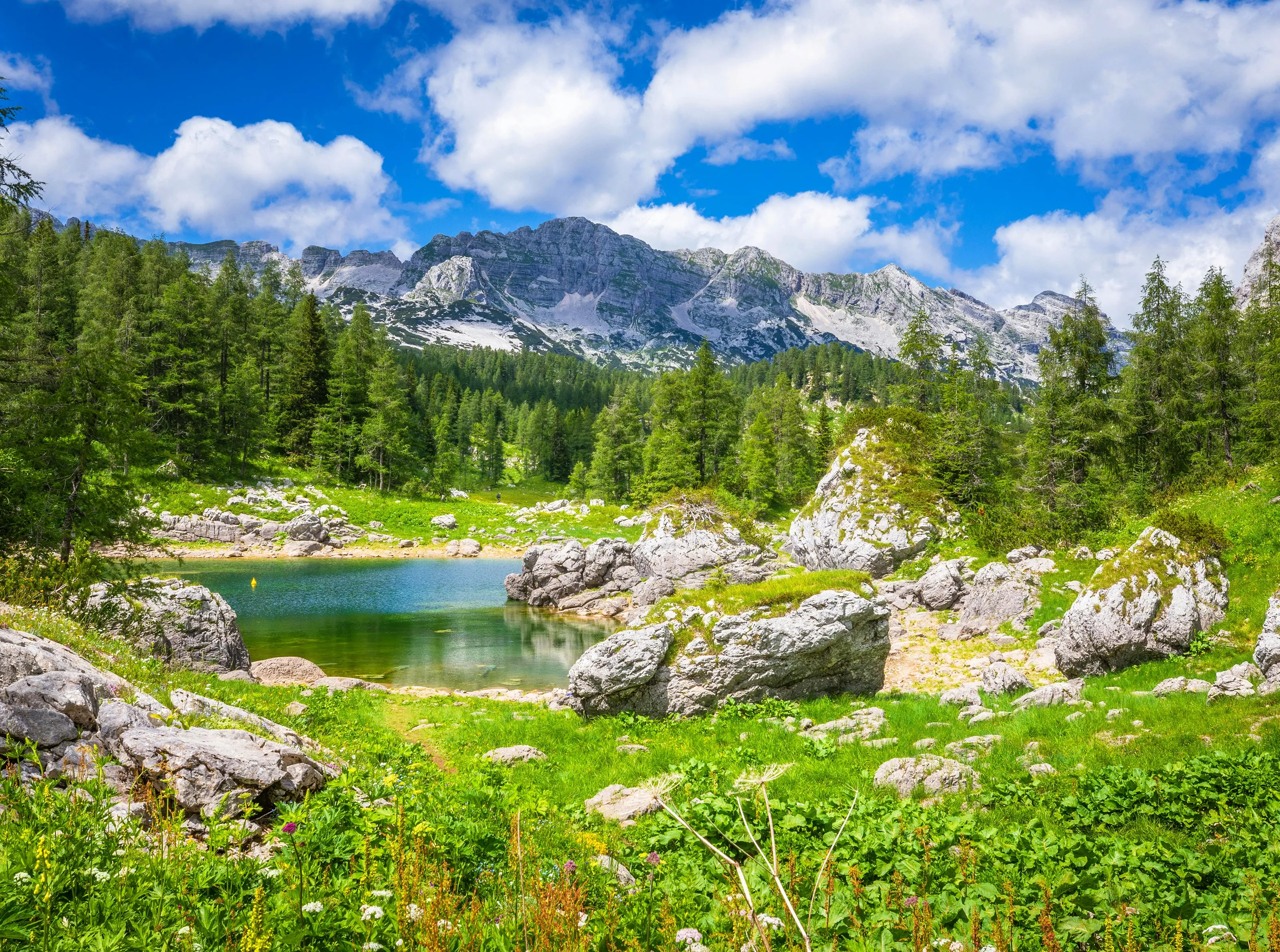
Typical property costs:
- Ljubljana: €4,500 per square meter
- Coastal areas: €2,000-4,000 per square meter
- Maribor and other cities: €1,200-2,000 per square meter
- Rural properties/villages: €1500-2,000 per square meter
While Slovenia doesn't offer a "golden visa" (residency through property investment), owning property does simplify renewals of existing residence permits.
Many Americans are surprised to find charming village houses with land available for under €100,000, though renovation costs should be factored in for older properties.
The Expat Life: Day-to-Day Living in Slovenia
Life in Slovenia blends Central European comfort with a laid-back vibe. People here value family, nature, and a good coffee. Expect grocery stores stocked with fresh yogurt, cheeses, and seasonal produce – all cheaper than in the U.S. Public transport (buses and trains) covers most places; a monthly bus pass in Ljubljana is only €30. If you live outside a city, a car is handy. Gas is about €1.30–1.50 per liter (roughly twice the U.S. price, but cars are efficient). Broadband internet is fast and reliable in towns, slower (or satellite) in remote valleys.
Slovenians can seem reserved at first, but they’re polite and warm up quickly if you learn a few words. Speaking “hello” (dober dan) or “please/thank you” goes a long way. Most people under 40 speak English well, and many signs or official websites have English versions. When shopping or dining, a simple “hvala” (thanks) and smile will earn you friendly service. Weekends often revolve around nature – hiking, cycling, skiing – or socializing at cafes. Expect a slower pace: many shops close for a couple of hours at lunchtime, and almost everything is closed on Sunday (except gas stations and some restaurants). Plan errands accordingly (stock up on Saturdays!).
Ready to Rewire your Life?
Sign up to receive updates and insights.
By submitting your email address, you will receive a free subscription to RA Postcards and special offers from Rewire Abroad and our affiliates. You can unsubscribe at any time, and we encourage you to read more about our Privacy Policy.
Weather gives you four true seasons: warm summers (25–30°C) especially inland, mild winters on the coast (5–10°C), and colder snowy winters in the mountains (–5°C or lower). Slovenia is fairly green year-round. In town, summer afternoons might mean a café-crawl or market browsing; in winter, evenings are cozy inside with hot wine or tea. Health and safety are top-notch (serious crime is rare). If you're into winter mountain adventures you're in the right place!
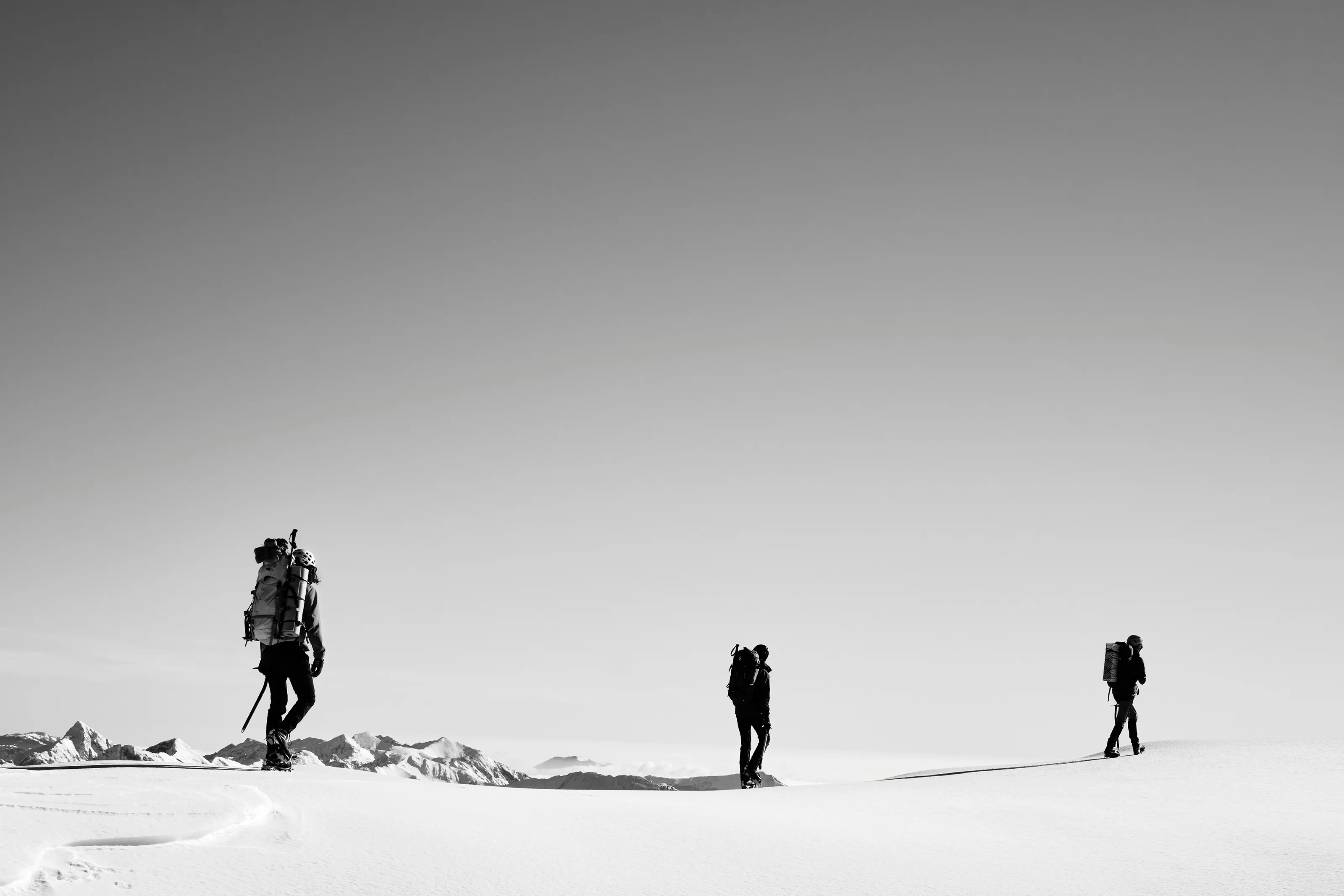
No place is perfect: you might grumble about bureaucratic paperwork (forms in Slovene!) or waiting a bit longer at government offices. Some expats joke that the national sport is waiting for the bus, and it takes patience to navigate lines and stamps. On the bright side, residents praise the clean air, excellent healthcare, and relaxed social life. As one expat put it, “Slovenia is a small country with a vibrant social scene”. For retirees, it often means trading a hectic lifestyle for daily walks in the woods and memorable sunsets – very rewarding for those who prefer peace over chaos.
Pace and Quality of Life:
Slovenians prioritize work-life balance. Shops often close by 7-8pm, and Sundays are family days with limited shopping. The upside? More time outdoors, longer café conversations, and less consumer pressure.
Language:
While Slovenia's official language is Slovene (a Slavic language with challenging grammar), English proficiency is widespread in urban areas and among younger Slovenians. Learning basic Slovene phrases is appreciated but not essential for daily functioning.
Making Friends:
Slovenians tend to be initially reserved but warm and loyal once you connect. Expats recommend joining sports clubs, language exchanges, or volunteer opportunities to build relationships.
Transportation:
Public transportation is efficient in urban areas, and the country's small size makes owning a car optional. Many expats live car-free in Ljubljana or Maribor, renting occasionally for countryside exploration.
Seasonal Living:
Slovenia experiences four distinct seasons, with outdoor activities changing accordingly. Summers bring lake swimming, hiking, and outdoor festivals; winters offer skiing, Christmas markets, and cozy café culture.
Food Culture:
Farm-to-table isn't a trend in Slovenia – it's tradition. Weekly farmers' markets, small bakeries, and local wines become part of your routine. Most towns have excellent coffee culture with outdoor seating much of the year.
Bureaucracy:
This is where patience becomes virtue. Government processes move slowly but reliably. The key is securing a local "fixer" – a Slovenian friend or paid assistant who can help navigate paperwork.
Final Thoughts: Is Slovenia Right for You?
Slovenia offers an exceptional blend of European living at accessible prices, natural beauty, and modern conveniences. It's ideal for those seeking:
- A European base with easy travel connections
- Four seasons with abundant outdoor activities
- High quality healthcare at reasonable costs
- Safety and political stability
- A mix of Mediterranean and Central European cultures
However, it might not suit everyone. Consider these potential drawbacks:
- Language barrier can be challenging outside major cities
- Winter months can be gray and rainy
- Not as established an expat community as Portugal or Spain
- Fewer direct flights to US compared to larger European countries
Before making the leap, I strongly recommend a "scouting trip" of at least 2-3 weeks. Visit different regions in different seasons if possible. Try living like a local rather than a tourist – shop at supermarkets, use public transportation, and visit residential neighborhoods.
Many successful transplants first tried a three-month stay using the Schengen visa allowance before committing to the residency process.
For personalized insights into whether Slovenia meets your specific retirement needs, use the tools at RewireAbroad including our country search tool to compare multiple options and our FIRE calculator to determine if your retirement savings will stretch further in Slovenia.
With proper planning and realistic expectations, Slovenia offers what many retirees seek: a European lifestyle that remains authentic, affordable, and enriching – a place where that morning coffee overlooking Lake Bled could indeed become your everyday reality.
Find other places like Slovenia: 👉Country Search

Everything you need to know about retiring in Croatia—visas (90-day, retirement, digital nomad) to living costs, healthcare, and retirement locales.

Master healthcare with this guide - compare insurance, get expert tips on choosing the right policy, and avoid common pitfalls on coverage abroad.

Discover why more Americans are retiring abroad and explore the best destinations, cost comparisons, and real-life expat stories.
